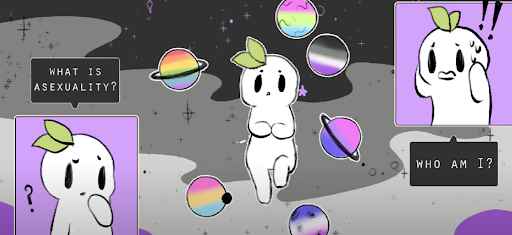Coming to terms with Asexuality
Asexuality, or being ace, involves minimal sexual attraction and is part of a diverse spectrum in attraction and desires. Often misunderstood, it’s not celibacy but an identity with emotional needs like anyone else. Not a medical concern, understanding asexuality can be confusing without awareness. We have answered some key questions, which will help the reader to understand asexuality better.
What does it mean to be asexual?
Answer: Being asexual means experiencing little or no sexual attraction. It is a sexual orientation that is part of the asexual spectrum, which contains much diversity in people’s experiences of attraction, arousal, and desires for relationships.
Can someone be bisexual and asexual?
One can identify as both bisexual and asexual. While bisexuality involves attraction to multiple genders, asexuality signifies limited sexual attraction. It’s crucial to recognize that asexual individuals may still experience diverse attractions, including romantic, aesthetic, and platonic, despite minimal sexual interest.
What is the Asexuality spectrum?
The asexual spectrum encompasses diverse identities, allowing individuals to define their asexuality. While many asexuals lack interest in sex, some experience romantic attraction. Others may not, and certain individuals only feel sexual attraction in specific situations, such as demisexuals. Spectrum allows individuals to define their asexuality.
Is Asexuality a medical condition?
No, asexuality is not a medical condition or something that needs to be fixed. Asexuality is a sexual orientation, just like homosexuality, bisexuality, and heterosexuality.
Do Asexuals masturbate?
Yes! Asexuality is a spectrum. Being asexual does not mean that pleasure is forbidden for you. An Asexual individual may feel turned on/aroused. Asexual individuals may or may not masturbate.
Can ACE folks be in relationships?
Yes! They can definitely be in relationships just like anyone else. Being asexual does not mean that people have to cut down on any forms of human interaction. The key is communicating the desires and preferences to the partner/partners.
What is the difference between being Aromantic and being Asexual?
Asexual
| Aromantic
|
It is important to note that a person can be both asexual and aromantic, but the two identities are not the same thing.
Can you be aromantic but not asexual?
Yes, it is possible to be aromantic but not asexual. Aromanticism refers to the lack of romantic attraction, while asexuality refers to the lack of sexual attraction. Aromantic people may experience sexual, platonic, aesthetic attraction. They may desire emotional intimacy.. Aromantic people may have sex, masturbate, and experience arousal.

Author

